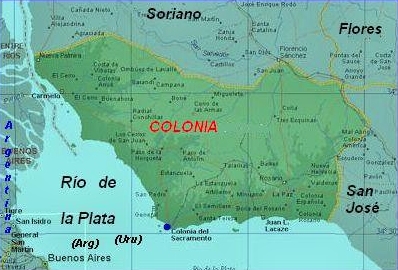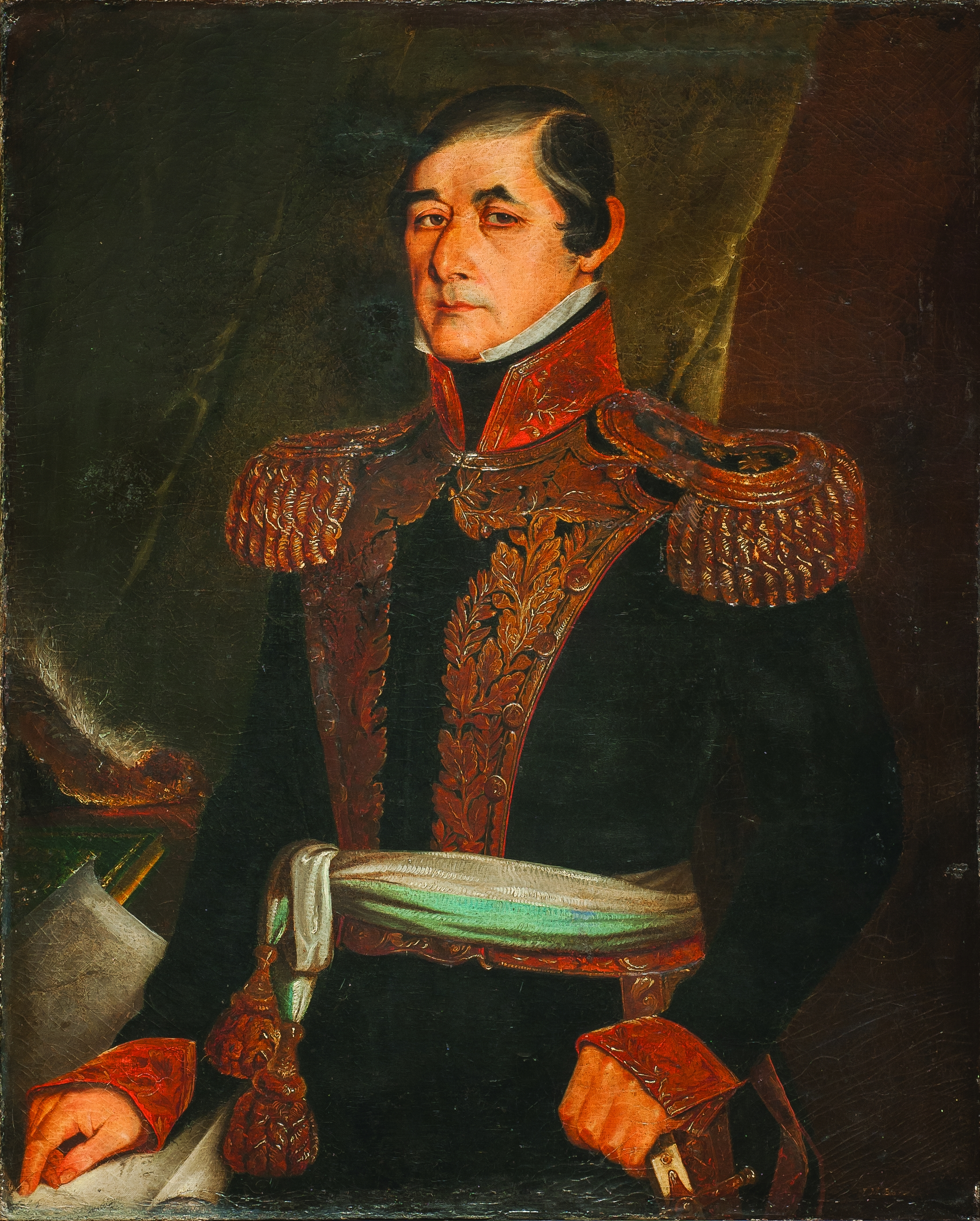|
Argentina–Uruguay Relations
Foreign relations between the Argentine Republic and the Oriental Republic of Uruguay have existed for over a century. Both countries were part of the Spanish Empire until the early 19th century. History Initially, both modern states of Argentina and Uruguay were part of the Spanish empire's Viceroyalty of the Río de la Plata. Buenos Aires was by then the capital city, and the Banda Oriental a province of it. During this period, both Buenos Aires and Montevideo faced two British invasions of the Río de la Plata. In the first one, the British successfully invaded Buenos Aires, being defeated later by a Montevidean army led by Santiago de Liniers. The British invaded Montevideo the second time, but failed to invade Buenos Aires, and Buenos Aires demanded the liberation of Montevideo in the British capitulation. The Spanish king Ferdinand VII was captured during the Peninsular War, and replaced by the French Joseph Bonaparte. He was not recognized as a legitimate king, which lef ... [...More Info...] [...Related Items...] OR: [Wikipedia] [Google] [Baidu] |
Argentine War Of Independence
The Argentine War of Independence ( es, Guerra de Independencia de Argentina, links=no) was a secessionist civil war fought from 1810 to 1818 by Argentine patriotic forces under Manuel Belgrano, Juan José Castelli and José de San Martín against royalist forces loyal to the Spanish crown. On July 9, 1816, an assembly met in San Miguel de Tucumán, declaring independence with provisions for a national constitution. Background The territory of modern Argentina was part of the Spanish Viceroyalty of the Río de la Plata, with its capital city in Buenos Aires, seat of government of the Spanish viceroy. Modern Uruguay, Paraguay and Bolivia were also part of the viceroyalty, and began their push for autonomy during the conflict, becoming independent states afterwards. The vast area of the territory and slow communications led most populated areas to become isolated from each other. The wealthiest regions of the viceroyalty were in Upper Peru (modern-day Bolivia). Salta ... [...More Info...] [...Related Items...] OR: [Wikipedia] [Google] [Baidu] |
Colonia Department
Colonia () is a department of southwestern Uruguay. Its capital is Colonia del Sacramento, the country's second oldest city. Weather Colonia has an annual average temperature of 20.4 °C (68.7 °F). In winter it has an average temperature of 9 °C (48.2 °F) and in summer it has an average temperature of 27 °C (80.6 °F) Economy The southwestern region of Uruguay, in which Colonia is located, is typically associated with dairy production. Its proximity to Buenos Aires makes it the main entry point for tourists traveling from Argentina to Uruguay. Tourism is also favored by the presence of a World Heritage Site A World Heritage Site is a landmark or area with legal protection by an international convention administered by the United Nations Educational, Scientific and Cultural Organization (UNESCO). World Heritage Sites are designated by UNESCO for .... The PepsiCo plant located in the department's capital, is one of the three largest world ... [...More Info...] [...Related Items...] OR: [Wikipedia] [Google] [Baidu] |
José Figueroa Alcorta
José María Cornelio Figueroa Alcorta (November 20, 1860 – December 27, 1931) was an Argentine lawyer and politician, who managed to be the only person to head the three powers of the State: Vice President of the Nation (President of the Senate), from October 12, 1904 to March 12, 1906, President of the Nation from that date and until October 12, 1910; and President of the Supreme Court of Justice of the Argentine Nation, from 1929 until his death in 1931. Biography Figueroa Alcorta was born in Córdoba as the son of José Figueroa and Teodosia Alcorta. He was elected a National Deputy for Córdoba before becoming Provincial Governor in 1895. In 1898 he returned to the Argentine Congress as a Senator. In 1904 he became Vice-President of Argentina and in 1906 succeeded Manuel Quintana Manuel Pedro Quintana Sáenz (October 19, 1835 – March 12, 1906) was the President of Argentina from 12 October 1904 to 12 March 1906. He died in office. Biography Manuel ... [...More Info...] [...Related Items...] OR: [Wikipedia] [Google] [Baidu] |
Estanislao Severo Zeballos
Estanislao Severo Zeballos (27 July 1854 - 4 October 1923) was an Argentine lawyer and politician who was Minister of Foreign Affairs of his country three times. He was one of the most prominent intellectuals and politicians of his time. He wrote on a broad range of subjects in books and periodicals, including Catholicism, history, ethnography and geography. Early years Estanislao Severo Zeballos born in Rosario, Santa Fe, Argentina on 27 July 1854, the eldest son of Lieutenant Colonel Estanislao Zeballos and Felisa Juárez. His father was an aide to General Juan Pablo López, and was wounded in 1838 when fighting against the Indians. In 1850, with the rank of major, his father became captain of Puerto de Rosario. His father supported the Great Army of Justo José de Urquiza in 1851, and was promoted to lieutenant colonel. Zeballos senior served as Judge in Rosario in 1853, and was the first to name the streets of the city. Both parents were related to established and i ... [...More Info...] [...Related Items...] OR: [Wikipedia] [Google] [Baidu] |
Manuel Oribe
Manuel Ceferino Oribe y Viana (August 26, 1792 – November 12, 1857) was the 2nd Constitutional president of Uruguay and founder of Uruguay's National Party, the oldest Uruguayan political party and considered one of the two Uruguayan "traditional" parties, along with the Colorado Party, which was, until the 20th Century, its only political adversary. Biography Manuel Oribe was the son of Captain Francisco Oribe and María Francisca Viana, a descendant of the first governor of Montevideo, José Joaquín de Viana. At the beginning of the revolution of independence in the Rio de la Plata he enlisted in the patriot ranks as a volunteer. His baptism of fire took place in the battle of Cerrito, on December 31, 1812, during the Second Siege of Montevideo, feat of arms that ended in a victory for the Patriots. He took part alongside José Gervasio Artigas' resistance against the Luso-Brazilian invasion in 1816. In late 1817, with Montevideo already fallen into the hands o ... [...More Info...] [...Related Items...] OR: [Wikipedia] [Google] [Baidu] |
Fructuoso Rivera
José Fructuoso Rivera y Toscana (17 October 1784 – 13 January 1854) was a Uruguayan general and patriot who fought for the liberation of Banda Oriental from Brazilian rule, twice served as Uruguay's President and was one of the instigators of the long Uruguayan Civil War. He is also considered to be the founder of the Colorado Party, which ruled Uruguay without interruption from 1865 until 1958. He made a controversial decision to almost completely eliminate the native Charrúa during the 1831 Massacre of Salsipuedes. Life Rivera was a rancher who joined the army of José Gervasio Artigas in 1810. Eventually he rose to the rank of general. When Banda Oriental was occupied by the United Kingdom of Portugal, Brazil and the Algarves and the defeated Artigas forced into exile in 1820, Rivera stayed in the newly created Cisplatina province. Rivera first met with Juan Antonio Lavalleja in 1825, during an event that would become known as the Abrazo del Monzón (Embrace of ... [...More Info...] [...Related Items...] OR: [Wikipedia] [Google] [Baidu] |
Unitarian Party
Unitarianists or Unitarians (in Spanish, ''Unitarios'') were the proponents of the concept of a unitary state (centralized government) in Buenos Aires during the civil wars that shortly followed the Declaration of Independence of Argentina in 1816. They were opposed to the Argentine Federalists, who wanted a federation of independent provinces. Argentine unitarianism was an ideologic grouping, not a religious one. As such, it is unrelated to religious Unitarianism. History In the Argentine War of Independence the forces of the United Provinces of the Río de la Plata fought Spanish royalists who attempted to regain control of their American colonies after the Napoleonic Wars. After the victorious May Revolution of 1810, disagreements arose between the dominant province of Buenos Aires, who were known as Unitarianists, and the other provinces of Argentina, known as the Federalists. These were evident at least as early as the declaration of Argentine independence in 1816. T ... [...More Info...] [...Related Items...] OR: [Wikipedia] [Google] [Baidu] |
Emigration From Europe
European emigration is the successive emigration waves from the European continent to other continents. The origins of the various European diasporas can be traced to the people who left the European nation states or stateless ethnic communities on the European continent. From 1500 to the mid-20th century, 60-65 million people left Europe, of which less than 9% went to tropical areas (the Caribbean, Asia, and Africa). From 1815 to 1932, 65 million people left Europe (with many returning home), primarily to "areas of European settlement" in North and South America,Make America": European Emigration in the Early Modern Period edited ... [...More Info...] [...Related Items...] OR: [Wikipedia] [Google] [Baidu] |
Paraguayan War
The Paraguayan War, also known as the War of the Triple Alliance, was a South American war that lasted from 1864 to 1870. It was fought between Paraguay and the Triple Alliance of Argentina, the Empire of Brazil, and Uruguay. It was the deadliest and bloodiest inter-state war in Latin American history. Paraguay sustained large casualties, but the approximate numbers are disputed. Paraguay was forced to cede disputed territory to Argentina and Brazil. The war began in late 1864, as a result of a conflict between Paraguay and Brazil caused by the Uruguayan War. Argentina and Uruguay entered the war against Paraguay in 1865, and it then became known as the "War of the Triple Alliance". After Paraguay was defeated in conventional warfare, it conducted a drawn-out guerrilla resistance, a strategy that resulted in the further destruction of the Paraguayan military and the civilian population. Much of the civilian population lost their lives due to battle, hunger, and disease. The gue ... [...More Info...] [...Related Items...] OR: [Wikipedia] [Google] [Baidu] |
National Party (Uruguay)
The National Party ( es, Partido Nacional, PN), also known as the White Party ( es, Partido Blanco), is a major political party in Uruguay. It was founded in 1836 by Manuel Oribe, making it the country's oldest active political party, and together with the Colorado Party, its origin dates back to the time of the creation of the Uruguayan State. Positioned on the centre-right of the political spectrum, the National Party is ideologically liberal, nationalist, Pan-Americanist and humanist. Considering the interim co-government of the '' Gobierno del Cerrito'' headed by Manuel Oribe, and the Defense Government from Montevideo led by the Colorado Joaquín Suarez, in the middle of the Uruguayan Civil War, and with the exception of the current administration of Luis Lacalle Pou, the PN has ruled the country for 35 years interruptedly throughout its history; This includes constitutional, interim, de facto presidents, and collegiate governments. Although General Manuel Oribe is reco ... [...More Info...] [...Related Items...] OR: [Wikipedia] [Google] [Baidu] |
Uruguayan Civil War
The Uruguayan Civil War, also known in Spanish language, Spanish as the ''Guerra Grande'' ("Great War"), was a series of armed conflicts between the leaders of Uruguayan independence. While officially the war lasted from 1839 until 1851, it was a part of armed conflicts that started in 1832 and continued until the final military defeat of the ''Blancos'' faction in 1904. Out of supporters of presidents Fructuoso Rivera, Rivera and Manuel Oribe, Oribe grew the Colorado Party (Uruguay), Colorado Party and the National Party (Uruguay), National Party, both of which received backing and support from foreign sources, including neighboring Empire of Brazil, the Argentine Confederation, Buenos Aires Province as well as European powers, primarily the British Empire and the July Monarchy, Kingdom of France, but also a legion of Redshirts (Italy), Italian volunteers including Giuseppe Garibaldi. The great diversity of nationalities among the military forces supporting the Colorado Party pos ... [...More Info...] [...Related Items...] OR: [Wikipedia] [Google] [Baidu] |




